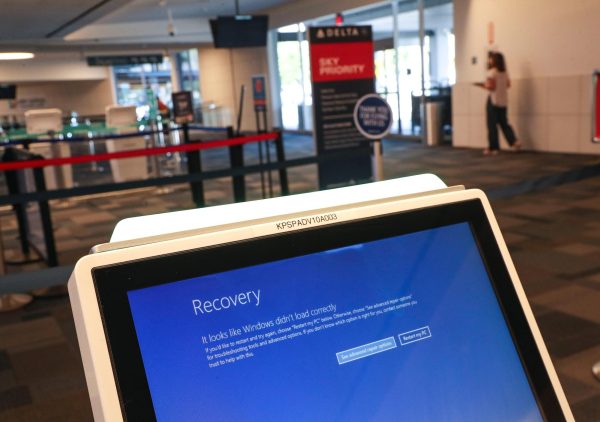UIHC seeks to raise level of patient satisfaction
The level of at UIHC patient satisfaction is slightly lower than the national and state average as a result of crowded and aging facilities. The UIHC leadership hopes to improve patient satisfaction with increased training for nurses and physicians, improving the quality of care for patients.
University of Iowa Hospitals and Clinics as seen on Sept 17, 2018.
July 25, 2019
As Iowa’s population ages, hospitals are becoming more and more crowded, and aging facilities can detract from the patients’ experience, thus decreasing the level of patient satisfaction.
At the University of Iowa Hospitals & Clinics — the only hospital in the state certified to take on tertiary- and quaternary-level complex cases — daily occupancy typically hovers around 90 percent. At other hospitals in Iowa, the typical daily occupancy rate is around 50 percent, according to UIHC CEO Suresh Gunasekaran.
Patients at UIHC are typically housed in double-occupancy rooms in the hospital’s more crowded units, which tends to decrease levels of patient satisfaction. Gunasekaran said patient satisfaction also tends to be lower in older units of the hospital, in which patient rooms can be more than 50 years old.
“Our challenge is really consistency. Most of our units are full, most of our units have about two patients per room,” he said. “We have high-performing units and low-performing units in all areas. Part of this is sharing best practices across all units and also creating one standard of how we manage patients across the house.”
Gunasekaran did not specify which units perform better than others at the hospital.
The UIHC currently a 3-of-5 star rating in patient satisfaction, slightly below the national average and slightly below the average of other hospitals in Iowa, Gunasekaran said. UIHC leaders want to increase this to 4of 5 stars.
Gunasekaran said UIHC is developing a long-term plan to add more bed space. Currently, the institution is focused on raising patient satisfaction numbers through improving communication and empathy between health-care professionals and patients, using a training program called Compassionate, Connected Care.
In data from the Hospital Consumer Assessment of Health Care Providers and Systems, collected in July 2017 through June 2018, UIHC received a 3-star rating in both nurse communication and physician communication and a 2-star rating in staff attentiveness. Hospitals receive ratings in a number of categories and an overall rating.
Quietness was the lowest ranked category for UIHC, with a 1-star rating. UIHC did not receive 5 stars in any category.
Jonathan Bothell, the director of the UIHC Office of the Patient Experience, said the hospital has had success in increasing patient satisfaction with the new training protocols using patient comments.
“The [comments] that I am reading now specifically mention the things that we’re working on,” he said. “They’re pointing out a nurse took the time to sit down and explain this care plan to me, or this provider took the time to take an extra five minutes to explain the medication he was changing me to. That’s what we’re really trying to focus on with these programs.”
RELATED: An inside look into the University of Iowa Hospitals & Clinics’ AirCare team
Josh Paxton, the lead UIHC patient-experience coach for UIHC, said the hospital’s nurses and physicians have appreciated the training.
“I get feedback from two different groups: frontline staff and nurse managers,” he said. “The consistent feedback that we get is that this is a set of tools that is helping these frontline staff engage with their patients more sympathetically and compassionately, knowing at the end of the day that is what the majority of patients want.”
UIHC has the third-highest rate of incoming transfer patients in the nation. With few hospitals in Iowa able to take on complex cases, UIHC sees a high number of those patients, especially from outside Johnson County.
Gunasekaran said the aging population in Iowa contributes to a higher number of complex cases.
“I think that more of these patients — the average hospital around the state is not capable of taking care of [them],” Gunasekaran said. “Even if they want to take care of them, they’re having a tough time recruiting the necessary staff to be there to offer the full complement of capabilities.”
The UIHC also hopes to improve patient satisfaction for those who may be far from their hometowns. More than one-third of UIHC patients come from outside of Johnson County.
“If you’re a long way from home, there are different issues that you can run [into] in terms of whether happy with the hospital when you’re away from home,” Gunasekaran said. “You may not have the same family and support structure accompanying you to the hospital, what you’re going to do when you leave the hospital — all of this creates a lot more anxiety.”















